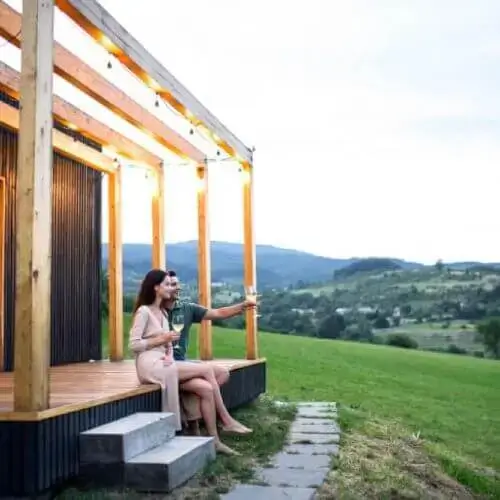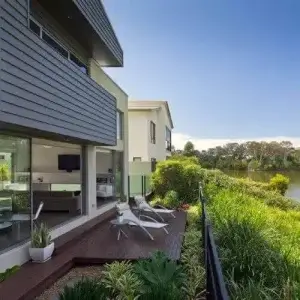Home / Compare Home And Content… / Fire cover in home insur…
Fire cover in home insurance
How your home may be covered for fire damage through home and contents insurance



Key takeaways
- ‘Fire insurance’ isn’t available as a standalone insurance product. Instead, it’s an insured event that forms part of a home and contents insurance policy.
- A home and contents insurance policy is designed to cover you for loss or damage to your home and possessions due to fire damages.
- If you have home insurance your bricks and mortar will be covered in the event of a fire. However, you may need a contents policy to cover your possessions damaged as a result.
Tips for preventing and handling fire damage from our home insurance expert, Adrian Taylor

Keep your yard and exterior well-maintained and free from debris
Keeping your yard well-maintained can help reduce the risk of damage from a bushfire. Remove dead branches and keep the grass around your home cut low; dispose of the clippings too, as these can be sources of fuel for a fire. Likewise, keep your gutters clear of dead leaves and twigs.
Practice safety when handling a flame or any heat inside your home
Inside the home, make sure you’re practicing safe habits with fires. Don’t leave candles unattended or near curtains. Keep your heaters away from bedding, tablecloths and anything flammable. Check your appliances regularly and make sure you’re not overloading your power points.
Take photos of personal items for proof of ownership
Consider taking photos of your belongings and having a digital backup saved somewhere so that if you do experience a fire, you have photos to help you sort out what needs replacing.
Test all smoke alarms at least every 12 months
Test your smoke alarms to make sure they’re functioning properly at least every 12 months. Replace the smoke alarm batteries if needed so you have a vital warning if a fire starts in the home.
Cover for fire damage
What is the insurance definition of fire damage?
While fire is an insured event there is no standardised definition of fire damage across insurers. Make sure you check the Product Disclosure Statement (PDS) to see exactly what is covered and if there are any coverage limits.
How does fire cover with home insurance work?

‘Fire insurance’ is not a specific type of insurance product; rather, it’s an insured event included in all home and contents insurance policies. Your home and contents insurance policy is designed to cover you in the event a fire damages or destroys your home or possessions.
Otherwise known as home buildings insurance, a home insurance policy covers the rebuilding costs for your home up to your sum insured (i.e. how much your home is covered for), but not your contents within it; this is why it’s important to have contents insurance (potentially as a combined policy for homeowners or standalone for renters) so your possessions are also covered for fire damage. The type of coverage you have (home insurance cover, contents only or combined cover) and which items are damaged will determine whether you can make a claim or not.
The amount you receive from your insurance claim will depend both on your level of cover and the value of your home and contents. If your home and possessions are a total loss, your elected insured amount should adequately cover the repair and replacement costs.
If you’re unsure of the value of your home, you may need a professional property valuation to give an accurate assessment of your sum insured.
How can home and contents insurance help after a fire?
There’s a lot of work involved in repairing a home or replacing contents damaged by fire. Fortunately, home and contents insurance policies can help by covering a variety of different costs that can come up following a fire.
The table below shows the different things that home and contents insurance may typically help with when it comes to fire insurance coverage. Be aware that these lists aren’t exhaustive, and fire cover varies between insurers.
| Covered by home insurance | Covered by contents insurance | Excluded |
|---|---|---|
|
|
|
Always read the PDS of a new policy document before you buy and remember that cover is subject to your insured sum, limits, exclusions and policy limits.
Is arson included in fire cover?
If someone deliberately attempts to set fire to your house, this may be covered under home and contents insurance in the same way that vandalism and other types of malicious damage are. However, if you, a tenant or a house guest starts the fire (either deliberately or through intentionally reckless/illegal acts), this is likely not covered.
Am I covered if I accidentally start a fire?
If you start a fire by accident, you can be covered by home and contents insurance. Whether you put a candle too close to the curtains or you have a cooking disaster, most home and contents insurance covers flame damage caused by accidents.
If there are other types of fire damage, like scorching or melting but there was no flame, this may fall under accidental damage cover which can sometimes be additional coverage that needs to be purchased in order to add it to your policy.
When do I need fire cover?
Should I have fire cover if I live in a bushfire risk area?
Fire protection is particularly crucial in Australia, a country that’s no stranger to this natural disaster. During the summer months, raging bushfires and wildfires could destroy the homes and belongings of many people across the country.
Thankfully, home and contents insurance could provide a payout towards the repair or rebuilding of your home and belongings inside it if it’s damaged by fire, protecting you from major out-of-pocket costs and giving you peace of mind.
Do I need insurance for fire damage if I’m renting?
Renters can get renters insurance which is a contents insurance policy that will cover their personal property from a range of events, including fires. If you’re renting, it will also offer you legal liability cover should you be found liable for a fire that destroyed the building you were renting in.
Important to know
How much does it cost to include fire cover in home and contents insurance?
Fire cover is automatically included in home and contents policies, so you pay for it through your premiums. However, the amount a policyholder would pay in premiums can be influenced by the risk of a house fire at your address, as well as the estimated cost of rebuilding, repairing or replacing your home and personal belongings.
For example, living in a bushfire-prone area may increase your insurance costs, as your insurance provider will see the property coverage as a higher risk. Likewise, if your contents would cost a significant amount to replace, you may pay a little more for your property insurance and contents insurance to reflect this higher value.
Do insurance companies decline fire claims?
Whether an insurer accepts your claim for fire damage usually depends on the details of the incident. While each claim is assessed on its own merits, generally, in the event of a fire, damage from flames is covered, but many insurance providers don’t cover scorching, melting, smoke damage or soot damage where there is no flame.
Some providers may cover smoke or soot damage where there was no fire by adding an option of accidental damage cover to your home policy. This could then cover accidents, for example, in the kitchen where a scorched benchtop is a result of setting down a hot pan on the bench.
What if my smoke alarms are faulty or out of battery?
If your smoke alarms aren’t maintained, your home may not be following your state or territory’s building legislation, and this means your insurance claim could be denied. It’s vitally important that your home complies with the rules of your state or territory.
Meet our home and contents expert, Adrian Taylor
As a General Insurance expert with over 13 years’ experience in financial services, Adrian Taylor works to make it easier for homeowners, renters and landlords to protect their home and contents. He believes it’s important for all residents (whether they rent, own or lease) to have adequate financial cover for their property and belongings in case the worse should happen.
